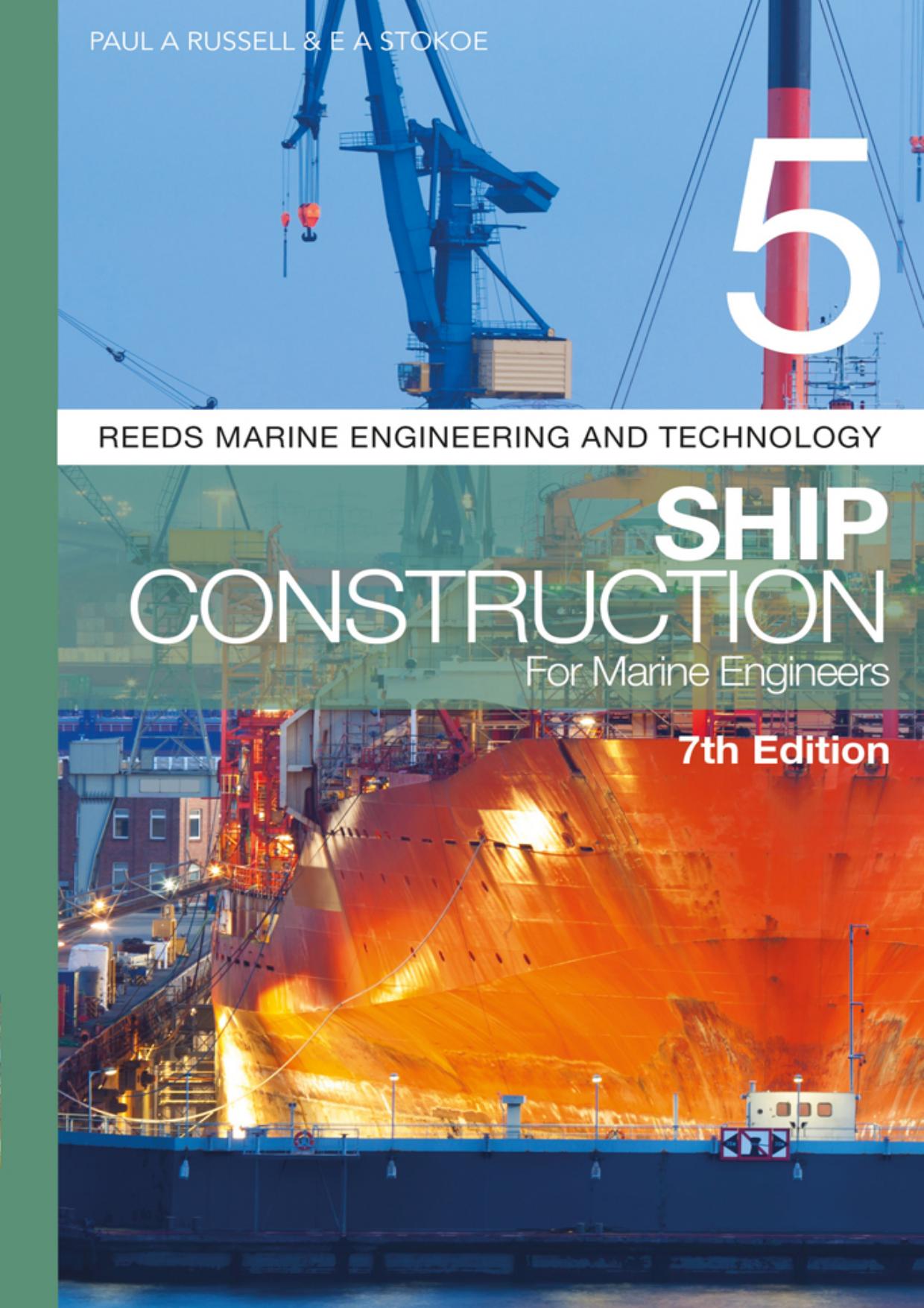Reeds Vol. 5: Ship Construction for Marine Engineers by Paul A Russell & E A Stokoe

Author:Paul A Russell & E A Stokoe
Language: eng
Format: epub, pdf
Publisher: Bloomsbury
Published: 2022-08-15T00:00:00+00:00
Figure 7.5 Solid floor in pounding area
Bulbous Bow
One of the most important tasks facing designers of ships is to optimise hull performance. There are two aspects to this activity: the first is to reduce hull resistance and the second is to reduce the effect of âwave dragâ.
The act of pushing the vessel through the water will create a bow wave. If a sphere is immersed just below the surface of the water and at the bow of the ship the wave from the sphere interferes with the normal bow wave created by the vessel and results in a smaller bow wave. Thus the force required to produce the bow wave is reduced.
At the same time, however, the wetted surface area of the ship is increased, causing a slight increase in the frictional resistance. In slow ships the effect of a bulbous bow could be an increase in the total resistance, but in faster ships, where the wave making resistance forms a large proportion of the total resistance, the latter is reduced by fitting a bulbous bow. A bulbous bow also increases the buoyancy forward and hence reduces the pitching of the ship to some small degree. Optimising the design of the bulbous bow is very important. On modern ships the operating range might also be increased and therefore the design of the bow might not be as straight forward as first thought by the designers.
Although the actual design of a bulbous bow will be optimised to an actual vessel, a typical construction of the bulbous bow is shown in Figure 7.6. The stem plating is formed by steel plates supported by a centreline web and horizontal diaphragm plates 1 m apart. The outer bulb plating is thicker than the normal shell plating, partly because of high water pressures and partly due to the possible damage by anchors and cables.
It is often found that due to the reduced width at the waterline caused by the bulb, horizontal stringers in the fore peak prove uneconomical and complete perforated flats are fitted. The framing of the bulb could be joined to the general frame of the fore peak using diaphragm plates.
Download
Reeds Vol. 5: Ship Construction for Marine Engineers by Paul A Russell & E A Stokoe.pdf
This site does not store any files on its server. We only index and link to content provided by other sites. Please contact the content providers to delete copyright contents if any and email us, we'll remove relevant links or contents immediately.
Navigation and Map Reading by K Andrew(5111)
Spare by Prince Harry The Duke of Sussex(5072)
Tuesdays with Morrie by Mitch Albom(4690)
Cracking the GRE Premium Edition with 6 Practice Tests, 2015 (Graduate School Test Preparation) by Princeton Review(4224)
Machine Learning at Scale with H2O by Gregory Keys | David Whiting(4177)
Never by Ken Follett(3789)
Goodbye Paradise(3727)
What It Really Takes to Get Into Ivy League and Other Highly Selective Colleges by Hughes Chuck(3696)
Harry Potter and the Prisoner of Azkaban (Book 3) by J. K. Rowling(3304)
Fairy Tale by Stephen King(3220)
Pledged by Alexandra Robbins(3132)
Kick Ass in College: Highest Rated "How to Study in College" Book | 77 Ninja Study Skills Tips and Career Strategies | Motivational for College Students: A Guerrilla Guide to College Success by Fox Gunnar(3075)
A Dictionary of Sociology by Unknown(3031)
Sapiens and Homo Deus by Yuval Noah Harari(2987)
Reminders of Him: A Novel by Colleen Hoover(2943)
The Social Psychology of Inequality by Unknown(2939)
Graduate Admissions Essays, Fourth Edition: Write Your Way into the Graduate School of Your Choice (Graduate Admissions Essays: Write Your Way Into the) by Asher Donald(2876)
Will by Will Smith(2791)
Zero to Make by David Lang(2726)
